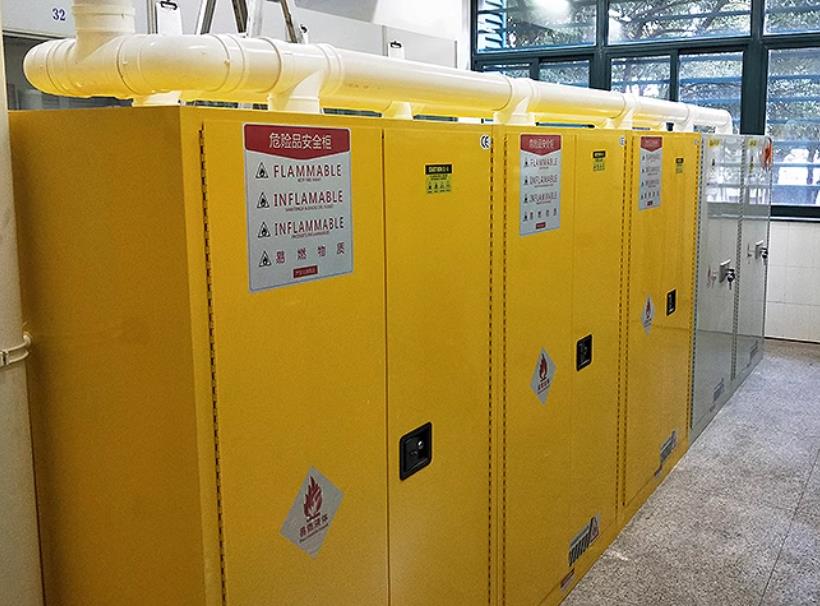Table of Contents
In the ever-evolving world of scientific research, one thing remains constant: the need for impeccable chemical storage and handling practices. As a lab safety expert with over 15 years of experience, I’ve seen firsthand how proper chemical management can make or break a lab’s safety record. Let’s dive into the essential best practices that will keep your lab safe, compliant, and running smoothly in 2024 and beyond.
Know Your Chemicals
Before you even think about storage, understand what you’re dealing with:
- Maintain an up-to-date chemical inventory
- Ensure all chemicals are properly labeled with name, concentration, and hazard warnings
- Keep Safety Data Sheets (SDS) readily accessible
Pro Tip: Use digital inventory management systems for real-time tracking and easy SDS access.
Proper Storage Techniques
The golden rule: Compatibility is key!
- Segregate chemicals by hazard class (flammables, corrosives, oxidizers, etc.)
- Use appropriate storage cabinets for each hazard type
- Store acids and bases separately
- Keep incompatible chemicals far apart
Remember: “Like stores with like” isn’t just a catchy phrase – it’s a lifesaver!
Temperature Matters
Some chemicals are temperature sensitive. Here’s what to watch for:
- Use explosion-proof refrigerators for volatile chemicals
- Monitor storage area temperatures regularly
- Avoid storing chemicals near heat sources or in direct sunlight
Ventilation is Vital
Good air flow prevents the buildup of hazardous fumes:
- Ensure proper ventilation in chemical storage areas
- Use fume hoods for handling volatile substances
- Regularly check and maintain ventilation systems
Spill Control
Accidents happen. Be prepared:
- Keep spill kits readily available
- Train all personnel in spill response procedures
- Use secondary containment for liquid chemicals
Personal Protective Equipment (PPE)
Your last line of defense:
- Always wear appropriate PPE when handling chemicals
- Ensure PPE is in good condition and properly fitted
- Train staff on correct PPE usage
Regular Inspections
Stay vigilant:
- Conduct weekly visual inspections of chemical storage areas
- Perform thorough monthly checks of all chemical containers
- Address any issues immediately
Proper Handling Techniques
Handle with care:
- Use bottle carriers when transporting chemicals
- Never carry chemicals in your hands or pockets
- Always use a fume hood when working with volatile substances
Emergency Preparedness
Hope for the best, prepare for the worst:
- Have an emergency response plan in place
- Clearly mark locations of safety showers and eyewash stations
- Conduct regular emergency drills
Training is Key
Knowledge is power:
- Provide comprehensive chemical safety training to all lab personnel
- Offer refresher courses annually
- Keep training records up to date
Bonus Tip for 2024: Embrace Technology
- Use IoT sensors for real-time monitoring of storage conditions
- Implement AI-powered inventory management systems
- Explore VR training simulations for hazardous chemical handling
Conclusion
Proper chemical storage and handling isn’t just about compliance – it’s about creating a culture of safety in your lab. By following these best practices, you’re not only protecting your team and your research but also setting the standard for excellence in laboratory safety.
Remember, in the world of chemical management, there’s no such thing as being too careful. Stay safe, stay informed, and here’s to a hazard-free 2024 in your lab!




